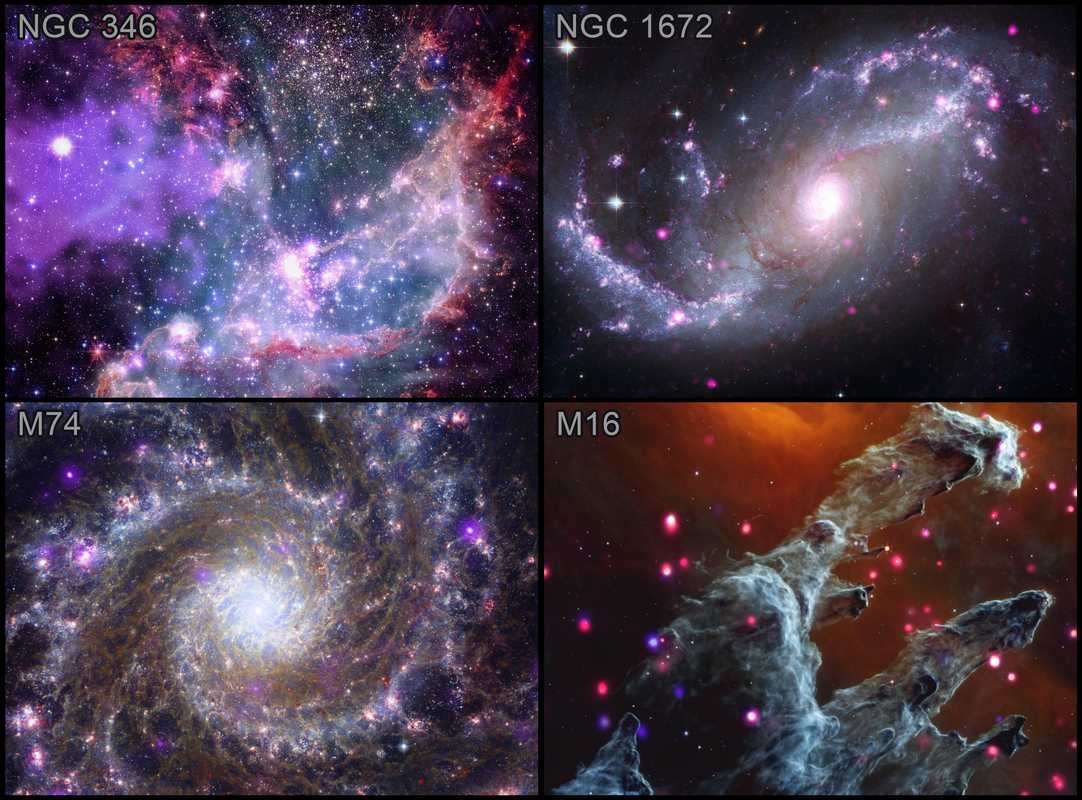World's Oldest Homo Sapiens Footprint Discovered-And it's 153,000 Years Old
The footprints were natural casts, and could be dated back 153,000 years ago by determining when light last touched the grains of sand.

Looking for a cool way to get your kids involved in astronomy? Just show them this picture.
These images are composite pieces of technological artwork that would be invisible to the naked eye. Five space-based observatories teamed up with one down here on Earth to color in famous regions of space with X-rays and infrared light—neither of which can be seen by us.
The image in the top left is of NGC 346, a star cluster in the Large Magellanic Cloud, 200,000 light years from Earth. The purple and blue haze on the left are X-rays, a form of high-energy light, left over from a supernova explosion. On the right, infrared data from the James Webb and the now-retired Spitzer space telescopes shows plumes of gas and dust that all those twinkling stars are either currently using, or have used to create their shining, burning forms.
The X-rays are being detected by the space-based Chandra X-ray Observatory, developed by Harvard, and humanity's flagship X-ray observatory.
To the right side, NGC 1672 is a spiral galaxy, but one that astronomers categorize as a "barred" spiral, meaning that the arms close-in to the center appear more like straight bars rather than curved tentacles. Here, Chandra's purple-colored X-rays reveal black holes amid the James Webb and Hubble telescopes infrared and optical light picture of this galaxy.
Messier 74 is also known as the "Phantom Galaxy" because it's relatively dim and difficult to spot with telescopes in a region that is otherwise pretty close to Earth. It's anything but dim in this image, captured face-on thanks to our planet's position.
Webb outlines gas and dust in the infrared lights which we see as green, yellow, red, and magenta, while Chandra's data spotlights high-energy activity from stars at X-ray wavelengths colored in Purple. Hubble's optical data showcases additional stars and dust along the dust lanes.
Messier 16, also known as the Eagle Nebula, is a famous region of the sky often referred to as the "Pillars of Creation." The Webb image shows the dark columns of gas and dust shrouding the few remaining fledgling stars just being formed. The Chandra sources, which look like dots, are young stars that give off copious amounts of X-rays.
Here, the X-rays are in red and blue, and highlight the huge activity given off by some stars in the area.
SHARE This Stunning Work With Your Friends On Social Media…
Be the first to comment